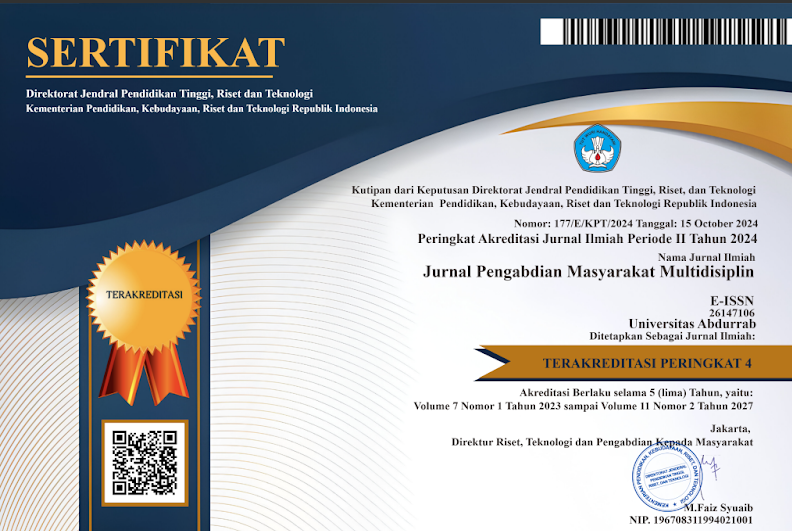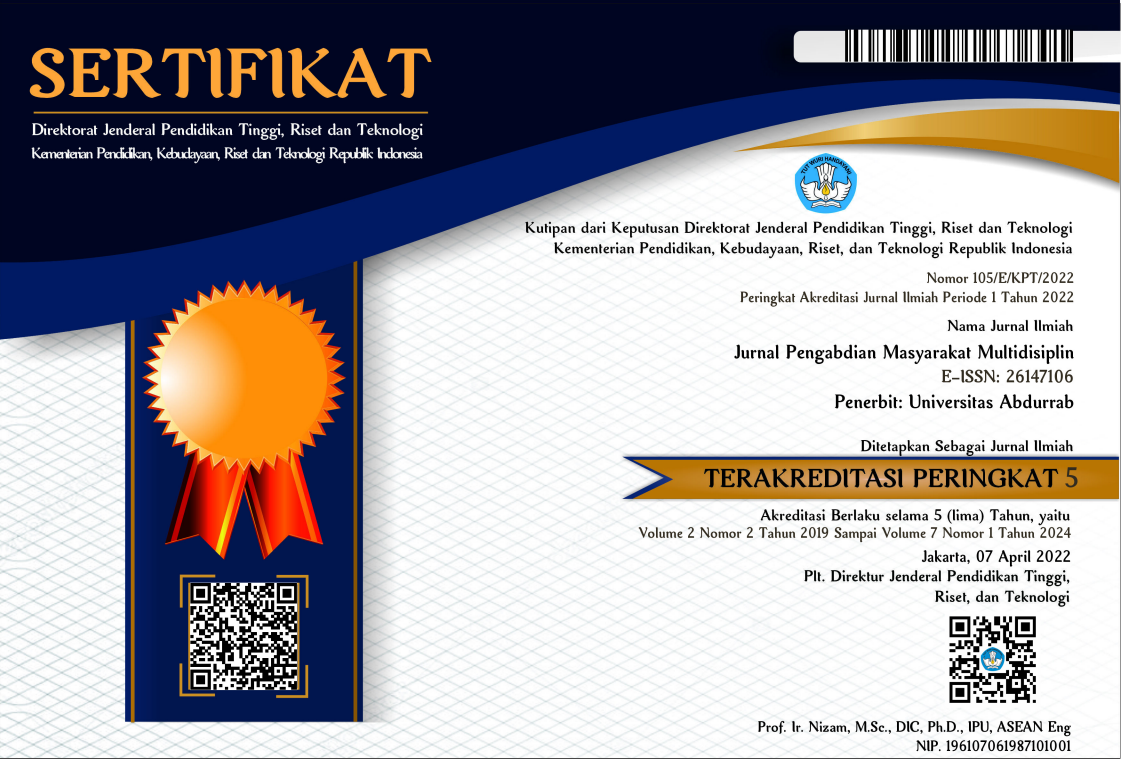OPTIMALISASI TUMBUH KEMBANG BALITA DENGAN MEMANFAATKAN BUKU KIA DAN PENERAPAN METODE SDIDTK DI KECAMATAN ABUNG SELATAN LAMPUNG UTARA
DOI:
https://doi.org/10.36341/jpm.v7i1.3902Keywords:
toddlers, cadres, growth and developmentAbstract
Stunting is a health problem due to insufficient nutritional intake during the first thousand days of life (HPK). One of the causes of stunting in Lampung Province is not optimal balanced nutritional intake and low coverage of Stimulation for Early Detection and Intervention of Growth and Development in Toddlers. North Lampung Regency is one of the six stunting locus districts in Lampung Province. The high stunting rate and low SDIDTK coverage in North Lampung Regency are caused by the low nutritional intake of toddlers and the lack of knowledge of cadres and mothers of toddlers about SDIDTK. This community service activity aims to empower the community (health cadres) to optimize the growth and development of toddlers by using the KIA Book and essential nutrition during the Golden Age Period. The community service activity method uses a process approach starting from planning, implementation, and evaluation which is carried out intercollaborative. Activities include specific promotive and preventive efforts to increase SDIDTK coverage and the nutritional status of children under five. The results of this activity increased the understanding of Posyandu cadres in monitoring the growth and development of toddlers, the existence of Posyandu cadres' efforts to overcome nutritional problems for toddlers, and good use of yard land by families to support food security.
Downloads
Downloads
Published
How to Cite
Issue
Section
License
1. Copyright of all journal manuscripts is held by the Jurnal Pengabdian Masyarakat Multidisiplin.Formal legal provisions to access digital articles of electronic journal are subject to the provision of the Creative
2. Commons Attribution-ShareAlike license (CC BY-NC-SA), which means that Jurnal Pengabdian Masyarakat Multidisiplin is rightful to keep, transfer media/format, manage in the form of databases, maintain, and
3. publish articles.Published manuscripts both printed and electronic are open access for educational, research, and library purposes. Additionally, the editorial board is not responsible for any violations of copyright law.
licensed under a Creative Commons Attribution-ShareAlike 4.0 International License.







